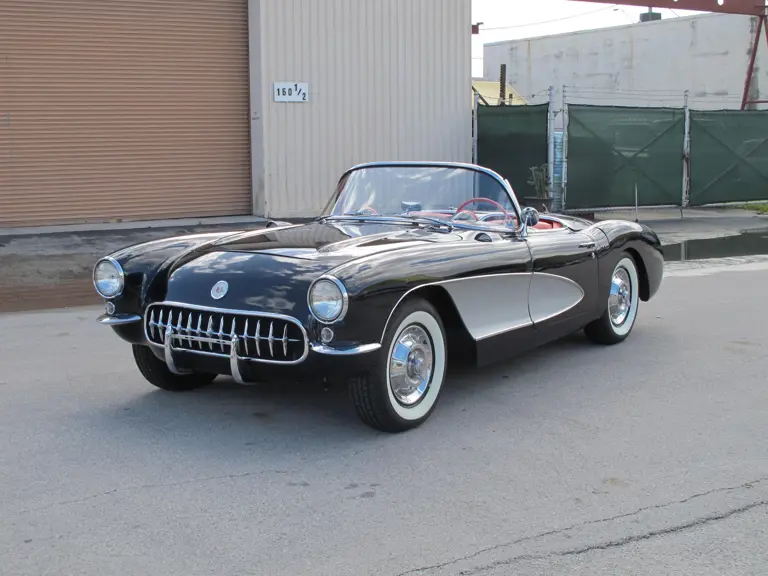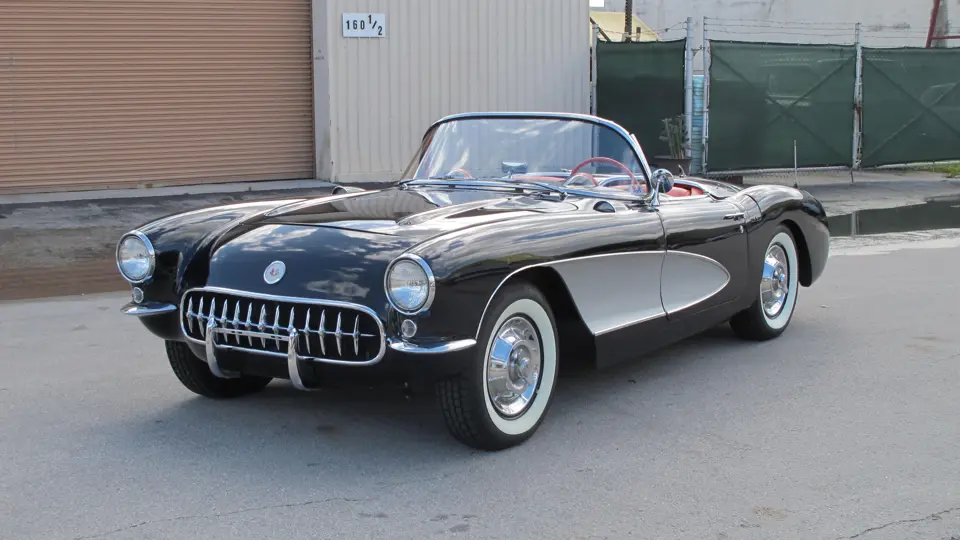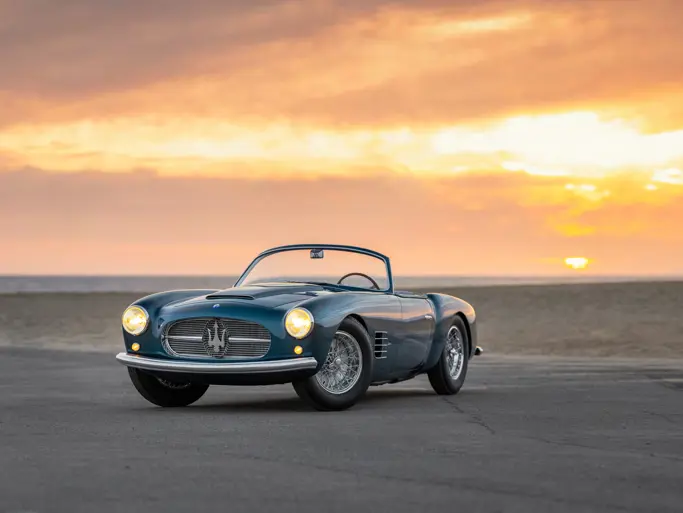 | Fort Lauderdale, Florida
| Fort Lauderdale, Florida
Visually, the Corvette changed very little in its first three years of production; however, 1956 would mark the Corvette’s first major stylistic makeover. Retaining the aggressive grille design of the prior models, the frontal styling of the 1956 Corvette was modified significantly with new fenders accommodating chrome-rimmed headlights mounted higher and no longer covered by the prior wire-mesh stone guards. For the first time, the Corvette received its now iconic side-coves and clean, sloping rear fenders with neatly integrated taillights. Six lacquer paint finishes were now available for 1956; Two-tone Onyx Black with silver coves was particularly rare, with just 223 Corvettes originally finished in this combination. This car is further detailed with red interior and trunk liner.
The Corvette also received a pair of roll-up windows, technically changing the car from a roadster to a convertible body style. Two 265 cubic inch V-8 engines were now available, reflecting the relentless development that had just begun on the soon-to-be-legendary small-block V-8 engine. The bulk of 1956 Corvette production, numbering 3,080 cars, was equipped with a “dual quad” solid-lifter engine producing a stout 225-hp, such as this car.
One of only 3,467 Corvettes produced for 1956, the example offered here is reported as being a “very correct car,” including the carburetors, interior and master cylinder. It was restored in 1994 and is stated to be a “number three” car. The Corvette has the distinction of being one of 1,570 with the Powerglide two-speed automatic transmission and also it has a power vinyl top in white; uncommonly one of 2,682 according to reliable sources. It also features painted steel wheels with correct hubcaps and wide whitewall radial tires. The powerful “dual-quad” 265-cubic inch V-8 Corvette is further equipped with a heater/defroster and a signal-seeking AM radio. A well-recognized design and model wherever it goes, this Corvette is immensely satisfying to drive.





